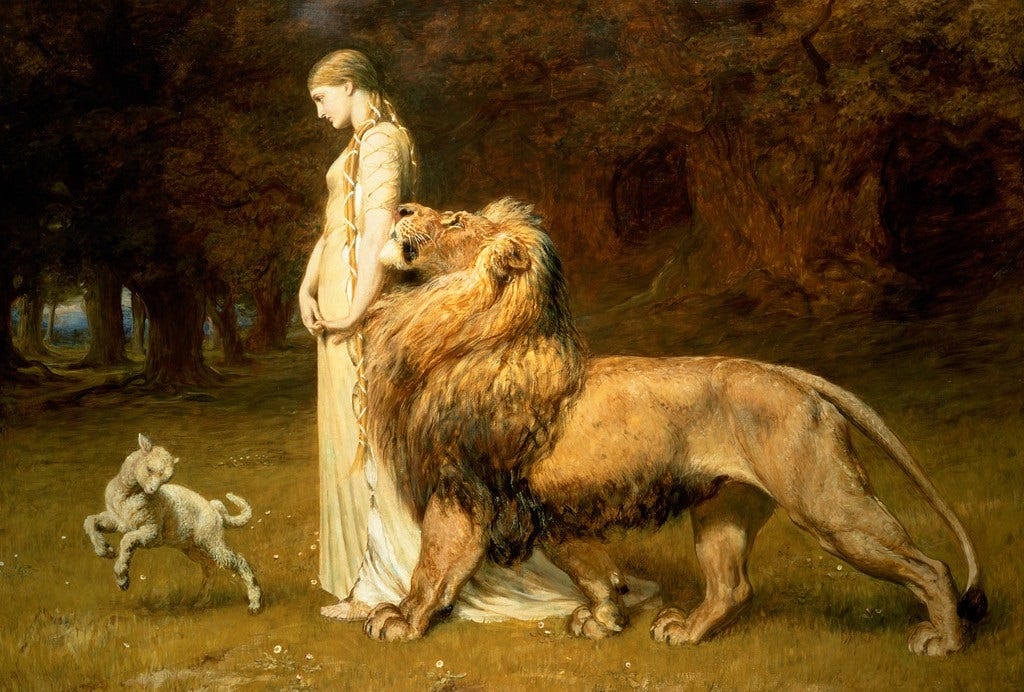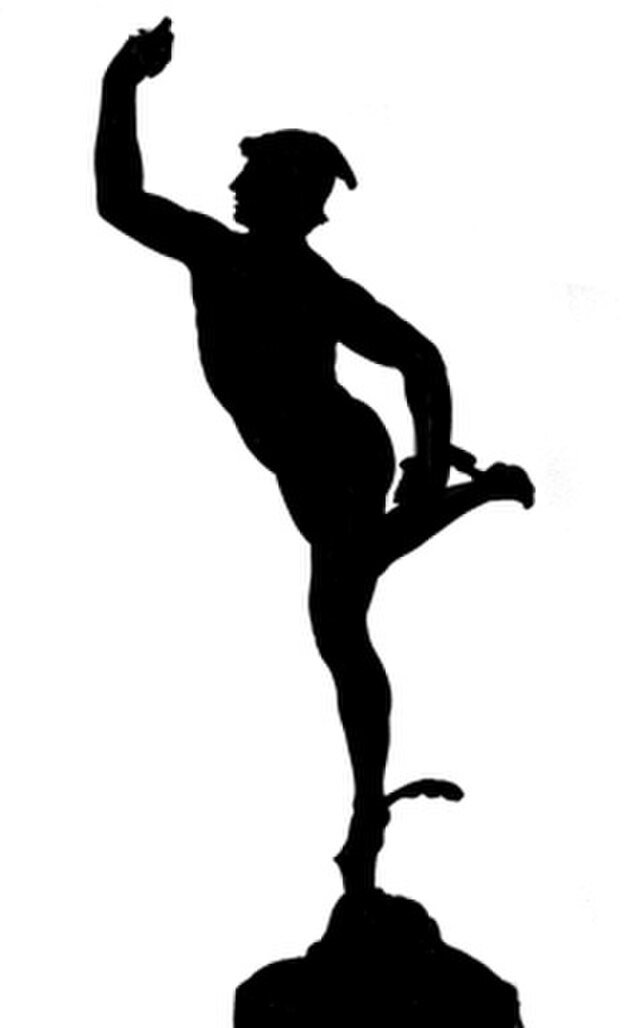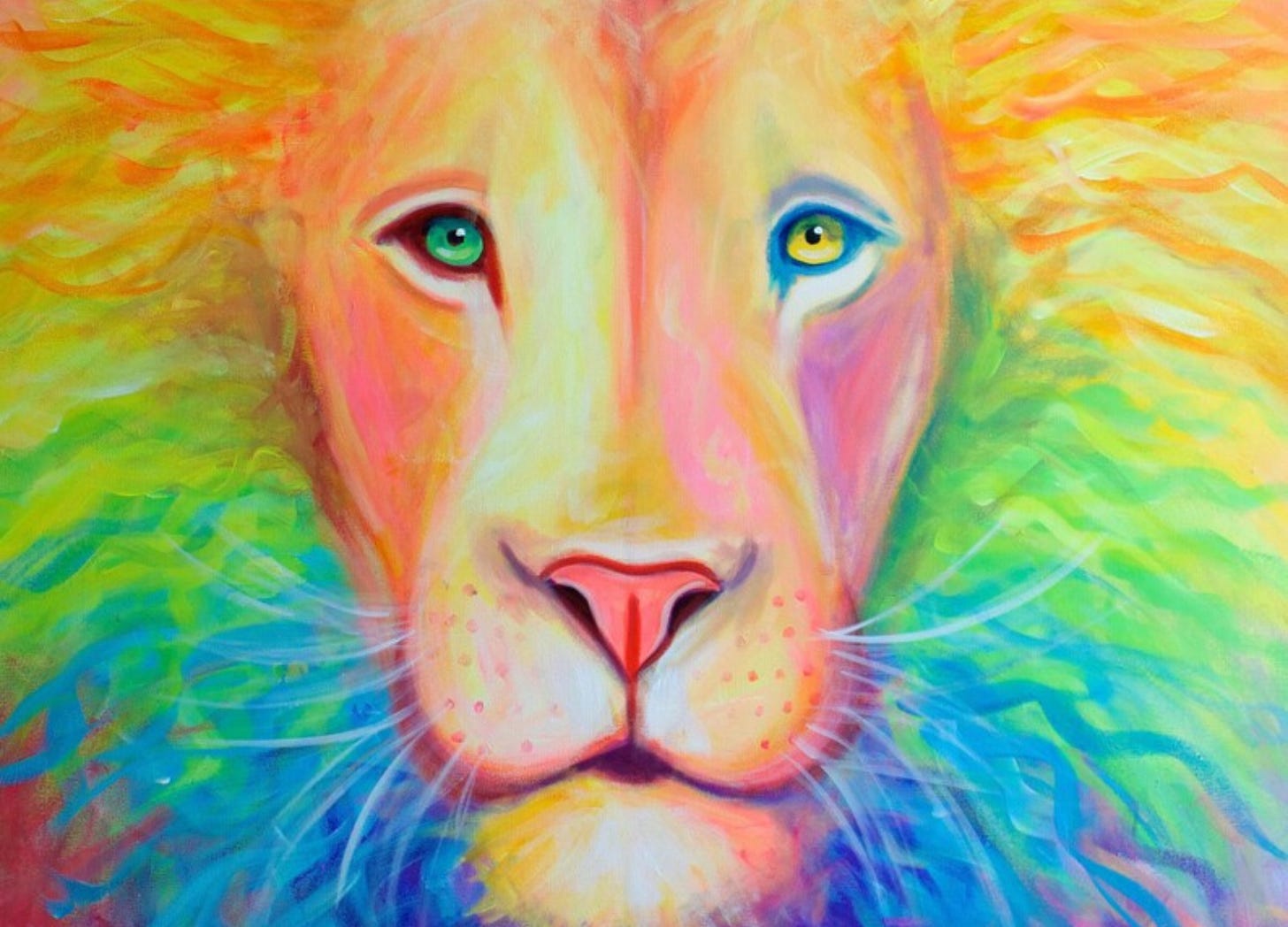Writing Lessons from the Strength Card (Part 2)
How to create productive ambiguity with Chen Chen's "A Spell to Find Family"
Chen Chen’s poem “A Spell to Find Family” aligns with the Strength card in obvious ways: there’s a lion, courage, and generosity in this poem. But there’s nothing obvious about the poem itself, and this is part of what makes it brilliant. How did Chen Chen pull off this balance of what Roman Jakobson refers to as poetic versus communicative language to achieve productive ambiguity, rather than obscurity, vagueness, or confusion? How did they find the courage to write through a potentially painful subject such as finding queer kin? Read on to find out!
In The Discovery of Poetry, Frances Mayes identifies various drivers of poetry such as sound, image, and idea. Idea is the hardest to work with because often you end up banging your reader over the head with your intended “message.” Poetry is more often about the experience of the poem itself, rather than the experience to which the poem refers.
If you approach a poem as a discovery you make through deploying techniques like sound and image, it’s likely going to be more surprising than if you write the poem in order to explain an idea. As the poet James Galvin once told me, “My ear is smarter than my brain.”
Let sound lead and you’ll arrive at more exciting places than you would have with your rational mind. You’ll also have more fun, and it may be one of the best ways you can take care of yourself when writing about trauma.
I see Chen Chen’s daring use of sound and image as courageous because they are trusting their reader to do the work to co-create the poem, rather than have it spoon-fed to them. They trust their reader to experience the poem, rather than fully understand it. In an interview on The Poetry Vlog, Chen Chen seems to favor practicing craft as a way to access courage rather than the idea of writing as self-expression.
The idea of writing as practice or work reminds me of the 8 of Pentacles. In this image, we see a person engaged in a repetitive task, working to refine his pentacle or work of art. All of the 8’s in the Tarot correspond to Major Arcana #8 Strength.
From the Rider-Waite Colman-Smith deck. Wikipedia commons.
From the beginning, Chen Chen asks his reader to do the work of co-creating the poem. We begin with ““I thirst for starlight/that opens elephant skin.” While I don’t know what that means, I know what it feels like to be thirsty. I can also see starlight “that opens elephant skin.” I’m a literal reader so I see starlight as a scalpel literally opening “elephant skin.” But you may see it differently.
These opening lines, and much of the poem, are comprised of poetic language because they’re ambiguous. We could also call it defamiliarized language. Defamiliarized or poetic language throws a wrench in communicative language, slowing us down so we can perceive language and the world anew.
Poetic language often foregrounds sound over relaying a message. Messages can be reductive but if you weave a network of sound into your poem, you unify disparate elements and meanings multiply. In the first two stanzas alone, the slant rhymes of “skin,” “raven,” and “riven” form a sonic connection that will echo later in “gargantuan” and “lion.” You can talk crazy to me as long as it’s crazy beautiful.
Chen Chen sees possibilities for queer kinship everywhere. From the moon to a “flood of wolves,” to “Heartbeat/elephantine, serpentine…,” all the way to the stunning image of the “highway lion” or “18-wheeler/whose shawl of mist is a mane/of newborn grandmothers” Chen Chen is like a witch, seeing themselves in relationship to animals, the elements, and the enchanted world.
What does that last line mean though? I don’t know exactly but the image itself is clear, and the sound rings true. I’ll circle back to this line and offer some possible interpretations later. For now, I’ll say that the lion connects to the Strength card’s theme of courage as it takes courage to open your heart to the possibility of “family” everywhere in a world that would prefer that we all regard each other with fear and contempt. In contrast, the speaker’s attitude is one of awe and wonder.
Contrast the above poetic language with communicative language, which is the transactional language we use every day. It’s the “Would you like fries with that?” language of commerce and capitalism.
“Extreme clarity if a mystery” — Palestinian poet Mahmoud Darwish
Communicative language has a place in poetry. With the right balance of poetic and communicative language, you can achieve “extreme clarity” in your imagery and sound to enact the “mystery” of the poem’s meaning.
Now I’m going to highlight the communicative language because these sections allow the other language to be boldly ambiguous.
The first piece of communicative language is the title. There are a lot of ways to title a poem. But I like it when a poet clearly tells me what the poem is “about,” so that I have some firm ground under my feet before we go flying off on a wild ride together. A good title can unify the many disparate parts of a poem.
This title tells me that the narrator wants to “find family” and they believe they can do so through magic. There’s nothing coy about the title. It’s plainspoken and clear, which balances out the poetic language later. The title is a friendly gesture, inviting us into the world of the poem.
The next piece of communicative language is:
My job is to trick adults
into knowing they have
hearts…
Chen Chen identifies the job of the poet here. How does Chen Chen “trick us”? They seduce us with gorgeous sound and imagery.
This phrase is repeated later:
“My job is to trick/myself into believing there are new ways” is a piece of communicative language that marries the poetic language of “impossible honey” so beautifully we find ourselves bewitched into agreement without perhaps knowing why.
What is “impossible honey”? If I consider how the title frames the piece, my first interpretation is that “impossible honey” is “family.” Honey strikes me as sensual, so one aspect of this “impossible honey” might be relationships that are loving and erotic rather than transactional. It’s no accident that “honey” rhymes with “family.” The family the speaker seeks is both fierce like a lion and sweet like honey. This quest for queer kinship might feel impossible but the speaker is fearless in seeking it out anyway.
The next piece of communicative language is:
For I do not know all the faces
of my family, on this earth.
Perhaps it will take a lifetime
(or five) to discover every
sister, brother….
These lines are the most courageous to me because they are the most generous and optimistic. Despite all of the violence aimed at LGBTQ+ and Asian folx, Chen Chen chooses to believe there is potential kin everywhere. Their view is expansive, abundant, and magical.
The only other piece of communicative language in Chen Chen’s poem is “I drive in the downpour.” Immediately afterwards we are in the realm of poetic language but we’ve been here before.
“Raven” was “conjugated into riven” in the first stanza. Here at the end, “the road conjugated into uproar…” Earlier the speaker’s heart is conjugated. We’re told their heart’s “irregular plural form/is Hermes” The poem is constantly turning, birthing one transformation after another.
Within “conjugated,” I hear the echo of “conjugal,” with all its heteronormative meanings of marriage and reproductive sex. But Chen Chen queers this idea; language is promiscuous, polyamorous, continually birthing new beings out of itself.
The image in the final stanza is absolutely clear, though the meaning is ambiguous. After referencing “the highway lion,” Chen Chen writes:
…The 18-wheeler
whose shawl of mist is a mane
of newborn grandmothers.
I can clearly see the “mist” that is a “mane” riding out behind the truck on the highway. The speaker sees kin in the element of water and air or “mist.” He queers the lion as female lions don’t have manes, but these “newborn grandmothers” do. I see them as all the “grandmothers” the LGBTQ+ community has lost to violence, all those who could be elders now guiding younger generations. But the image also offers hope that more “grandmothers” are being born every day. The “newborn grandmothers” is a beautiful paradox; the babies born today will be the grandmothers or elders of tomorrow. Like lions, they will be strong, courageous, and big-hearted.
Simultaneously, the image works without being translated into a metaphor. In that moment on the highway, the speaker experiences kinship in the “mist of mane” thrown back from the “highway lion.” The “newborn grandmothers” are alive in the mist for us and for the speaker of the poem. Animism is another witchy idea. The world is alive and always talking to us.
I offer this interpretation as only one of many possible interpretations. Great poems say the unsayable, and can’t be paraphrased.
Spell to Find Family By Chen Chen for Kundiman I thirst for the starlight that opens elephant skin. I thirst for the raven conjugated into riven by summer storm. My job is to trick adults into knowing they have hearts. My heart whose irregular plural form is Hermes. My Hermes whose mouths are wings & thieves, begging the moon for a flood of wolves, the reddest honey. My job is to trick myself into believing there are new ways to find impossible honey. For I do not know all the faces of my family, on this earth. Perhaps it will take a lifetime (or five) to discover every sister, brother. Heartbeat elephantine, serpentine, opposite of saturnine. I drive in the downpour, the road conjugated into uproar, by hearts I do not know. By the guttural & gargantuan highway lion. The 18-wheeler whose shawl of mist is a mane of newborn grandmothers.
This Week’s Writing Lessons from the Strength Card
When writing about trauma, it can be helpful to lean into craft elements like sound or image. Approach the work with a sense of discovery or play but still do the work (8 of Pentacles).
“Extreme clarity is a mystery,” as Palestinian poet Mahmoud Darwish says. Don’t be afraid to be obvious in certain places like your title. A clear title can unify wildly disparate elements in a poem or story.
In a poem, balance poetic with communicative language in order to achieve productive ambiguity rather than confusion, obscurity, or vagueness. Be clear in your imagery and trust your reader to co-create the meaning and/or to experience the poem with you.









